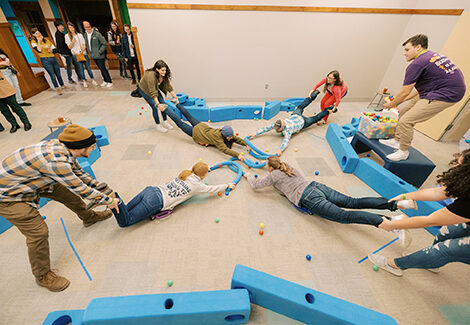Imagination is a powerful childhood tool. Freedom of creative expression encourages children to take risks and explore the endless possibilities of their imagination. Here are some ways to support children’s creative expression:

- Art Rich Environment – Creating spaces for art, music, dance, and dramatic play are important to children’s social and emotional development. Having an outlet to express one’s emotions is a healthy way to develop self-regulation and self-awareness. An art-rich environment should have spaces to share ideas, explore questions, and express feelings.
- Adequate Time – A deeper understanding of self comes with adequate time to explore different methods of creative expression. As children take time to explore different ways of expressing themselves, they not only become more self-aware, they also learn how others around them express themselves. Developing an understanding that everyone has ideas that should be listened to and valued is an important skill in relationship building.
- Open-ended Materials – Children use their natural curiosity to learn ways of sharing thoughts, ideas and feelings. An open-ended material is one that can be transformed and explored in a variety of ways. The material exploration should be child-driven requiring them to use their own creativity. The open-endedness of a material inspires one to explore all its affordances and helps us discover what our imaginations are capable of.
- Limit Directions– A child’s creative expression is as unique as they are. Putting more emphasis on the process of creativity versus the product helps children develop critical thinking and problem-solving skills. Exploring their own unique and diverse ways of creative expression builds self-confidence. One way to put more emphasis on the process is to ask children what they can do with a material and then uncover the possibilities based on their interests and ideas.

- Value of a Question – Asking children about the process they are going through encourages them to reflect deeper about how they are expressing themselves. Use questions that encourage children to share beyond what they are expressing as well as how they are expressing it. As this self-awareness is strengthened, so is their ability to use creative expression in unique and positive ways.
The ability to express oneself is a vital part of child development. It builds self-confidence and critical thinking skills. Healthy creative expression leads to a better understanding of one’s self and their ability to relate to and empathize in their interactions with others.






